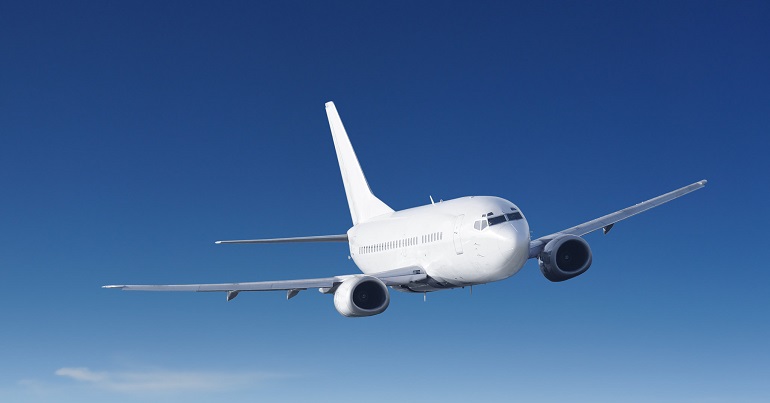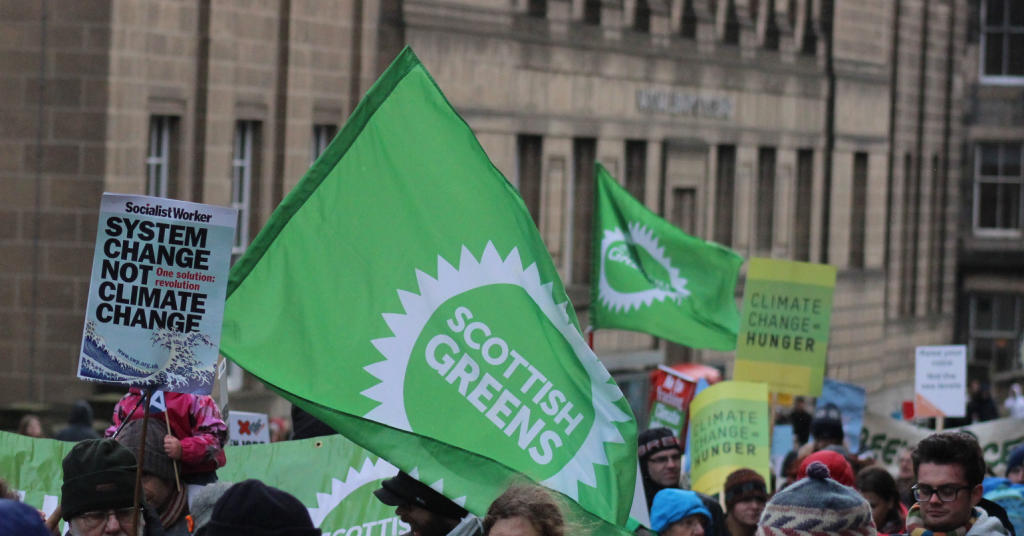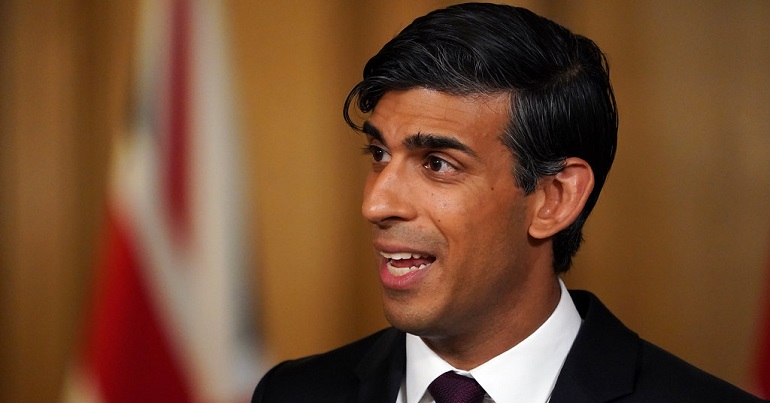“Jet Zero’s” techno-optimism is a flight of fancy

‘Jet Zero’, the UK government’s proposed aviation strategy, is not just a moronic oxymoron but a failure to conceive how to bridge the gap between aviation’s growth aspirations and the government’s climate targets. This is just the latest example of this government’s failure truly to grasp the scale of shift needed to face up to the climate emergency.
Either the UK government simply doesn’t get it – or takes the public as being willing to be hoodwinked by the rhyming of ‘net zero’ with ‘jet zero’. Either way, this is a recipe for inaction. It appears this government is so wedded to business interests that it is now incapable of setting out what sufficient action on climate change entails. Perhaps this techno-optimistic piffle was actually drafted by airlines and industry insiders before being palmed off as a government strategy? It certainly reflects the industry’s aspiration for unconstrained growth. And it lacks any attempt at climate leadership, astonishing seeing as it is published just a few months before the government takes the helm of the international climate conference COP26 in Glasgow.
The strategy takes two apparent opposites, aviation’s current kerosene burning and the government’s net zero targets, and attempts to superimpose them. But it simply is not technically possible to continue to grow aviation, whilst simultaneously taking sufficient action to decarbonise it. The strategy might be better titled as Plane Stupid: How the government believes we can still have our cake and eat it.
The government completely ignores the Committee on Climate Change’s recommendation to constrain aviation’s growth in its sector analysis published in December 2020. Instead it puts its blind hope in an almost total reliance on breakthrough technologies and overstating international expectations on fuel efficiency improvements. The result is a strategy that, by its own estimates, represents just a 14% reduction in aviation’s emissions from a business-as-usual position by 2050. There is no ‘leadership’ in proposing a strategy that delays the urgent action needed, and is dependent on breakthrough technologies that are far from being viable.
This government has track record in greenwashing its lack of climate ambition, particularly with regard to flying. Just before it gave the green light for a third runway at Heathrow in 2018 (heralded as the last runway to expand), it quietly published a strategy for how other airports could ‘make best use of existing runways’. Now, virtually every UK airport has interpreted this as a green light to grow and announced plans to expand. And the notion of ‘making better use’ has been interpreted pretty liberally. Gatwick, the UK’s second largest airport has just announced expansion plans that involve moving its existing emergency runway 12m sideways to turn it into a second runway.
So what has changed since the government’s June 2018 announcements? The IPCC published a special report on the impact of 1.5°C warming in October 2018 (which led to the formation of Extinction Rebellion and Greta Thunberg starting her school strike), and this year its devastating full peer-reviewed update on the latest climate science. Public opinion has shifted reflecting this increased urgency. But Jet Zero signals the government’s attempt to gloss-over the climate impacts of continuing its current aviation growth plans.
Instead a climate strategy for aviation is needed that accepts there is no viable ‘technical solution’ available to quickly reduce aviation’s carbon footprint today. This point is picked up on by the aviation specialists at the Aviation Environment Federation who highlight that even the International Energy Agency have clearly stated what the UK government have clearly failed to grasp – that for aviation to be part of a net zero plan will require limits on demand growth and quite possibly a reduction in flying.
The main technical ‘ambition’ modelled relies on higher efficiency improvements based on a goal of the global aviation industry which has been critiqued as unachievable, not an evidence-based target. This alone undermines the strategy’s credibility. And it is completely reliant on biofuels and electric and hydrogen powered planes, still to be proven yet alone compete on cost grounds with current fuels.
Even this only halves aviation’s emissions just before 2050. The heavy reliance on biofuels simply ignores how this might compete with food supplies globally, particularly as already locked-in climate change impacts on our ability to produce food and biofuel over the coming decades. And claiming 100% carbon savings from blending biofuels with kerosene whilst suggesting that 60% savings would be more realistic, along with the evidence paper’s quoting the potential of using cooking oil, gasification or making fuel from plastics, all reduce its credibility yet further. Chip-fat powered planes – really?! – just imagine how many chip shops the UK would need just to power planes from Heathrow for one day!
And gasification is a tricky technology to scale up and commercialise as it produces a mix of carbon monoxide (poisonous) and hydrogen (explosive) as a synthetic gas. Making jet fuel from burning household waste in this way is simply not credible. The attempted gasification of Surrey’s household waste has just been mothballed as the plant failed in its commissioning, wasting some £40-100m in government subsidies. And what of making fuel from un-recyclable plastics? Well, this causes the same emissions as burning fossil fuels and in any case the government’s 25-year Environment Plan said that such ‘single-use-plastics’ would be phased out by 2042. Maybe the parts of the government responsible for aviation don’t talk to those responsible for the environment? Or is it just the ministers that don’t see eye-to-eye?
Oh, and there is no mention that this approach, so relied on in this strategy, would not reduce the contrails of planes one iota – as burning biofuels, just like kerosene, will leave the same trails through the sky. These short-lived vapour contrails most likely at least double aviation’s global warming impact. Their deadly effects are included in the government’s methodology for calculating the carbon footprint of business flights, but not in this aviation strategy.
The strategy carefully sets out the eye-watering costs of all its proposed techno-fixes, but no plans for shifting these costs to the aviation sector. This highlights the strategy’s lack of any clear mandate or mechanisms to ratchet-up the cost of aviation fuel such that these alternatives, even if proven technically viable are commercially adopted.
But all of this dancing-on-the-head-of-a-pin misses the wider economic changes needed to decarbonise the UK economy. We must curtail the extent to which aviation (and shipping) lock the UK into global supply chains that command a vast transport and embodied carbon footprint not captured by the UK’s carbon accounting. UK airfreight was responsible for some 11 million tonnes of CO2 in 2019, with predicted growth three-times that of passengers, and hardly dampened by Covid. But the direct or wider impact of airfreight is entirely absent – except for a picture of a Beluga freight Super Transporter in one of the images that peppers the strategy.
As well as paying for infrastructure and Covid bailouts, the government provides an immense ongoing subsidy to aviation as VAT relief on fuel and air tickets – which far exceeds air passenger duty – totaling £8 billion in 2019. This leaves the government with less money to spend elsewhere. And the surface transport investments will continue to be driven to accommodate more capacity to/from airports, rather than in making local areas sustainable.
In the construction sector, something built with inadequate support is often jokingly referred to being hung off ‘sky hooks’ – destined to collapse. Similarly, this strategy has no foundations. Its ‘sky hooks’ are the illusion that aeroplanes, even more of them, can fly around the world 24-7, whilst reducing their carbon emissions. It is the jet engines in these planes upon which the success or failure of this strategy really hangs. In a recent online lecture Professor Allwood of the UK FIRES sustainable technology research team almost laughed off the notion that it is easy to decarbonise a jet engine referring to them as basically like ‘Bunsen burners in the sky’.
Overall, it appears this strategy was not written with the intention of presenting scenarios that had a decent chance of success but as part of a PR exercise in the run-up to COP26, at which international aviation and shipping’s zero climate agreement will no doubt come up. Instead the strategy appears to have just one clear goal – to claim publicly it is possible to carry on flying, even more frequently and further than we do now. And, at the same time (well actually about 20 years later) deal with (at least some, if a lot of other things happen) flying’s carbon footprint.
So, what might the alternative to this blinkered techno-optimism look like? Is a plausible carbon reduction plan for flying possible to imagine?
A starting point could be to apply to aviation a credible overall strategy for decarbonising transport. One such approach that is gaining credence is Avoid (the need to travel), Shift (to sustainable transport modes) and then Improve what remains. For road transport this could be read as place-based planning, and walking and cycling investments, before a shift to better public transport (bus and train), and then electrifying what remains. Applying this to aviation would require the starting point to be managing the demand for fast long-distance travel, whilst shifting a much-reduced number of short-haul flights to rail. The biggest problem with aviation is that unlike cars the electrification of aviation is still a long way off. That means we must eliminate flying where there are clear alternatives, and drastically curtail the rest. For a start aviation expansion plans must be halted – to avoid runaway climate change we must have no new runways.
One might be forgiven for not remembering one crucial difference between an aeroplane and the carbon emissions that comes out of its tailpipe. Whilst planes go up and come down each one leaves its greenhouse gas emission payload behind. The fuel is converted to carbon dioxide, which remains sitting up there in the sky without any easy way of getting it down again, for tens of thousands of years. To deal with the climate emergency we must stop putting it up there far, far quicker than any plan a government has dreamed of up to date.
But accepting the need for such a framework, and thus constraint of the aviation sector – apparently too difficult a political pill for this government to swallow – is what climate realism entails. Glossing over this need to reduce the scale of a sector that is virtually impossible to decarbonise in its current form is worse than hoping the problem goes away – it provides the cover to grow the size of the problem whilst little or no meaningful technological changes kick-in. We can and must do far better than this flight of fancy.
The government’s “Jet Zero” consultation closes at 23:45 on 8 September 2021.
PS. We hope you enjoyed this article. Bright Green has got big plans for the future to publish many more articles like this. You can help make that happen. Please donate to Bright Green now.
Image credit: Solway Group – Creative Commons




Leave a Reply